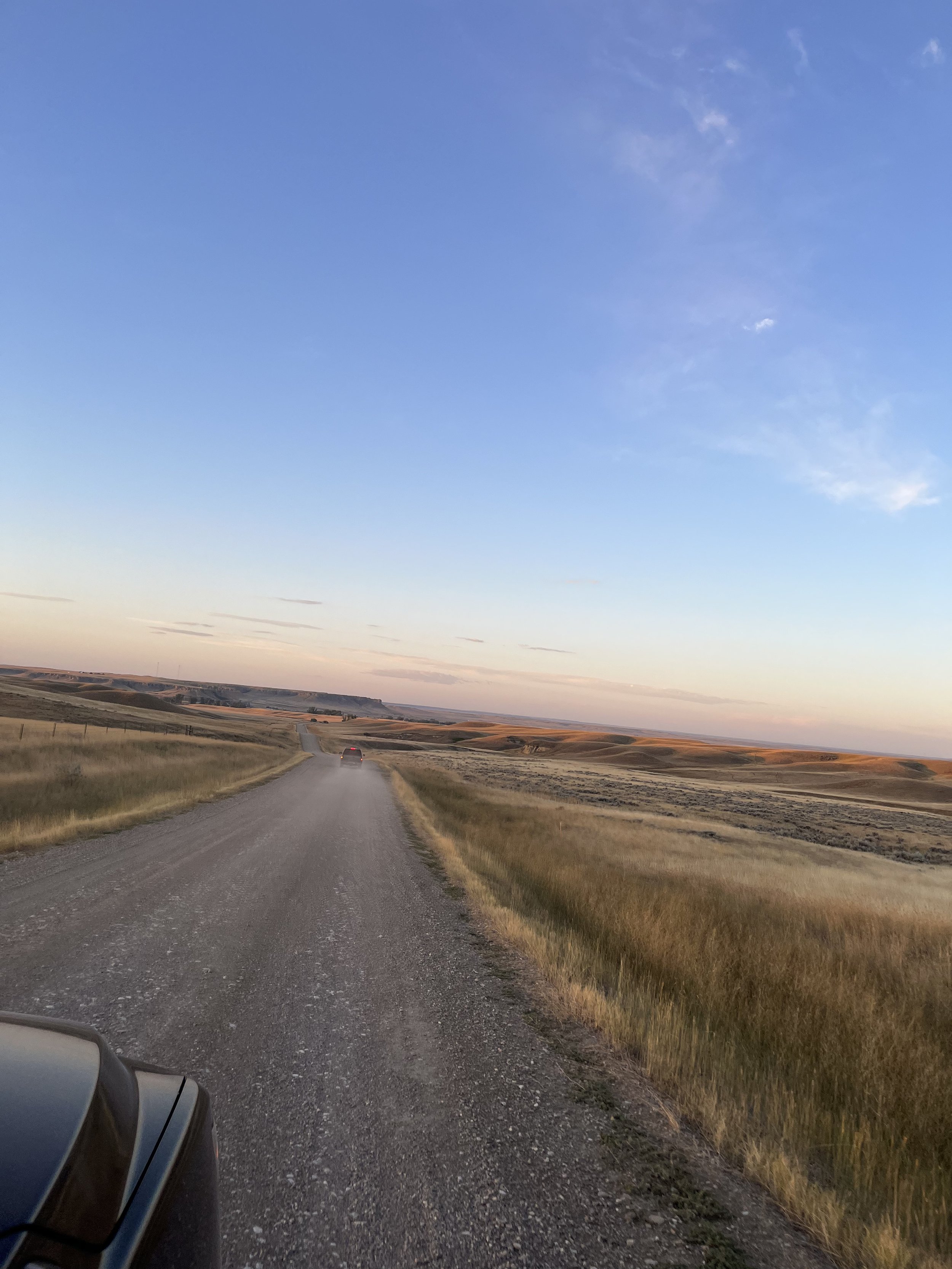
Letter From the Editor
Written by: Matt Barge
This year got off to a challenging start. On pitch day, a few minutes before the team sat down to propose their stories for this edition, Montana State University’s Director of Financial Aid Services sent out an email announcing that all federal financial aid was to be put on hold, effective that day at 5:00 pm. But no one complained, no one strayed from the task at hand, and every pitch had something interesting and meaningful to say about various communities from all over.
From months of campaign ads that tried to divide people, to the effects of climate change and rising costs on Montana’s food and agriculture and agro-tourism industries — the heart of our state’s economy — to frequent efforts to politicize the modern education system, a lot has happened since last year’s edition of Bitterroot Vol. 3. Population growth, urban development, and higher demand in housing markets continue to rise and to provide challenges in maintaining a sense of identity or place in the state, and more national or global challenges of the twenty-first century continue to operate in the background.
Yet, despite that first email and a number of other challenges at the beginning of the year, our team dedicated a lot of time and attention to exploring the possibilities of the current moment, to find and report on stories that remind us when times are challenging and it can be tempting for people to stay fenced off from one another, what really matters is community.
From first-gen farmers and ranchers to the famous Demars Ranch, local bars and steak houses, coffee houses, thrift gear shops, and the cartography of the Rocky Mountains, our writers have put together stories that center around very local communities just as much as larger ones.
Several pressing stories about community also appear in this edition, including stories of people joining together to speak out against cases of murdered and missing Indigenous persons, raise awareness of drunk driving in the state and support the families of victims impacted by it, and give light to the often ignored problem of Montana sex trafficking.
Also appearing are research into the possibilities of local aerospace and cosmology, private education, the effects of luxury developments like Bozeman’s Yellowstone Club, states like Montana’s effects on sleep patterns, and the health safety behind a museum’s massive ventilation system. As well as outdoors stories about backcountry skiing and the community behind an outdoor nonprofit for women and nonbinary people.
This year, we once again included an Arts & Culture section, which covers four stories about Western-style female artists, a Bozeman-based artist and professor, tattoo artistry, and even pinball. We also included a subsection this year within the Communities section in order to highlight three stories about finding community in Montana, from stories about culture shock, to fashion changes, to examples of indoor activities to do around places like Bozeman. We chose to center this year’s theme around possibilities because, at the time, it felt like we were stepping into many uncertainties. But given the team’s enthusiasm for writing about so many communities, maybe that theme could have fitted this year’s edition equally. Our team remained dedicated to writing stories that covered old and new walks of life, which I think fits our current climate perfectly.
The truth is, it can be pretty hard to write under uncertainty. One moment, the prospects of your future financial situation may seem at risk, and another moment, your situation might improve to a degree, but become more uncertain than before. Later that day, after the team had finished pitching stories, the university’s financial aid director sent out a second email saying that some federal aid may, in fact, not be withheld after all — which, all things considered, isn’t very reassuring two weeks into the semester.
But each day the conversation in the room kept to things like, ‘what did your interviewee have to say?’ or whether this or that picture seemed to fit this story better and so on. Talk of anxiety over finance, the university’s future or the future of the English writing program, or politics was almost always nonexistent. Anyone can turn on a phone or a computer, however, and in a few seconds, they can find the opposite conversations taking place, and rarely is it ever healthy or impressive.
In this class, if there’s one thing I learned as editor-in-chief, it’s that the community always took precedent, regardless of conversation. The team listened to their interviewees, approached stories with a sense of dedication and respect for the subject matter, and challenged one another to look at the story from new and different ways. Writers who can use and express human thought and emotion to interpret events and communicate to readers with reason will continue to be needed. And, never have I seen a more dedicated class than this one that looked around for possibilities, not division on any side. I’m very proud of the team’s dedication to Montana’s communities this year, and I hope you enjoy this latest edition of Bitterroot Vol. 4.
